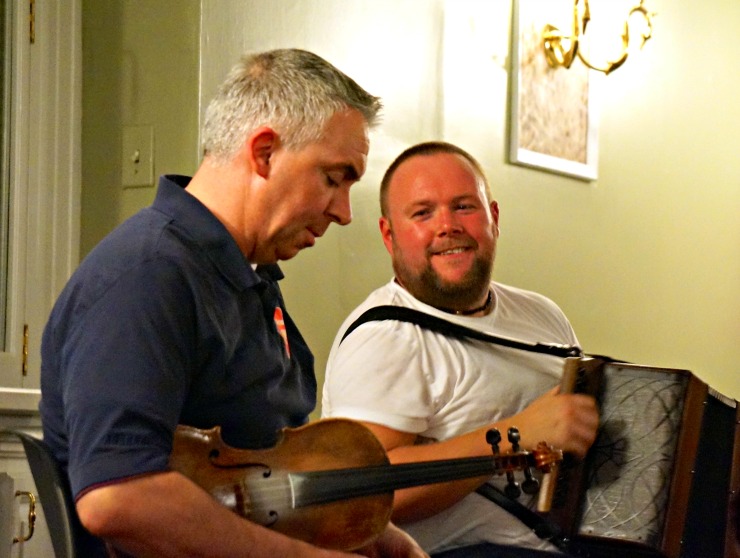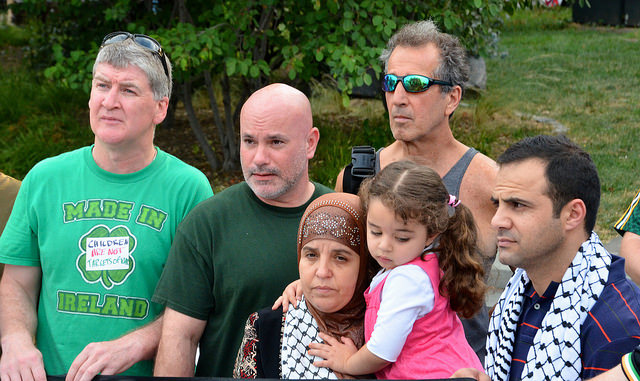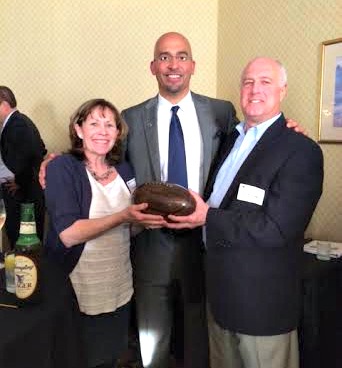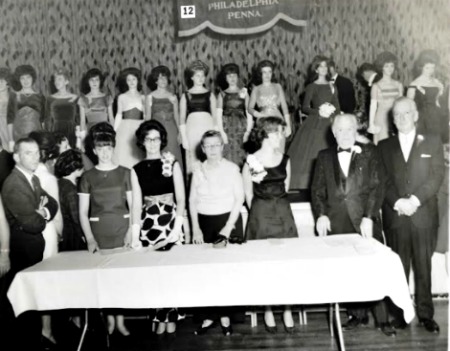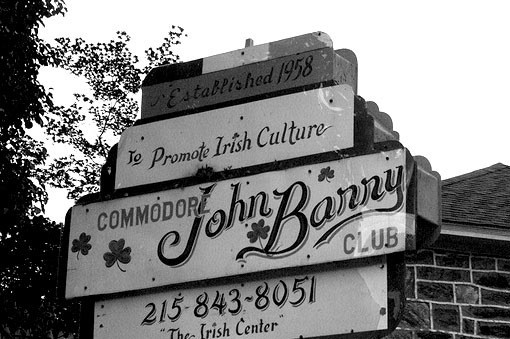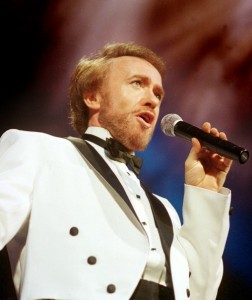
Cahal Dunne
Cahal Dunne has had his first name butchered in stage introductions all across the country. If he’s lucky, it’s pronounced “Ca-HAWL.” That’s how he pronounces it.
Actually, his last name has suffered at the hands of well-meaning Americans, too. He says that’s been pronounced “DOO-nee.” (It’s “DUNN.” The “e” is silent.)
Still, he says, it could be worse. “My first name translated from the Irish is “Charlie,” and “Dunne” means “brown.”
Whatever you call him, Cahal Dunne is a superb singer, pianist and raconteur, with a charming and witty stage presence, best known for ballads and old standards. He tours the country playing concerts to loyal crowds. They often see him again and again, and follow him to Ireland on the tours he operates.
He’s grateful for his success. Dunne has come a long way—from the Cork of his childhood to Pittsburgh, where he lives now, and from one very big hit in Ireland to living in near poverty as he tried to catch on in the United States.
If anyone can be called a natural talent, Cahal Dunne is, and the adults in his life took notice early on.
“My dad was a teacher, and he played piano he played piano accordion. He was a member of some of the better male voice choirs. When I was only 3, my grandmother on my dad’s side died, so he inherited the piano. It was the most important thing I’ve ever touched. I’ve been doing it all my life. Ka-plonking on that was magical. My dad played “Peg of my Heart,” and that was it for me.”
His musical career began not long after. One day, his teacher was playing an octave organ, and he corrected her. “She wanted to see my parents. I thought I was in trouble, but she said, ‘He’s got a good ear,’ and they sent me off to music school.”
Throughout his young life, he steadily improved, and ultimately, he graduated with a music degree from the University College of Cork.
He moved to Dublin to have a go at making it.
In 1979, he did. His song “Happy Man” won the Irish National Song Contest, qualifying him for the Eurovision Song Contest, where he came in fifth against 19 competitors. Fifth in Eurovision is still a very big deal. Eurovision, he says, “is like American Idol. People like Abba had won it a few years before. Had I won it for Ireland, I would not be here.”
“Happy Man” soared to No. 1 in Ireland and Europe.
It was all a dazzling turn of events. “One day I was giving piano lessons for 2 pounds an hour. I was living in a crummy, damp basemen efficiency in Dublin. The next day, I had won on television. You become sort of an overnight name. You’re known overnight. I was one of the beautiful people for a few months.”
His record company, CBS, sent him on tour throughout Europe. “One of the high points for me was, I’ve always been in love with Sophia Loren, and I was sitting next to her at dinner once.”
Then the Irish economy tanked, and along with it, Dunne’s hope for fame in Ireland. “All those little things that were very nice happened. It was a bitter pill to see it all going down the toilet. “
Dunne joined the emigrating masses, hoping to find more opportunities in the States.
He began on the bottom rung, living in a trailer. “I started out singing in Chicago in a pizza restaurant. Guys would yell out, ‘Couldja turn down the goddam music? I’m trying to eat a pizza!’ It was a toughening up experience. I think I’m the singer I am now because of it all.”
After a while, he moved to Pittsburgh. A comedian friend of his supposed to play in a big banqueting hall. The friend got sick. Dunne took his place, and that was the break he’d been looking for.
“The owner used to hire the likes of Hal Roach and The Wolfe Tones. He asked their agents to help me get up to New York, Philly and Boston. That was a a significant step, around 1982.”
Touring brought Dunne another stroke of good luck. It’s how he met his wife, who’s from Haddon Heights.
“Kathleen and I met at Carney’s in Cape May in 1989. (He played on the nights Ken McBride wasn’t performing.) I was playing in the piano bar section. She came up and gave me $2 tip to play a song. I didn’t know the song. She was gorgeous.”
Dunne walked up to her during a break and gave her the $2 back, and they began to chat. And that’s how they got together.
By that time firmly ensconced in Pittsburgh, Dunne had begun to find the audience that has kept him touring for years.
“I would describe myself more as a cabaret act, the kind you’d see in Branson or on a cruise ship, where I play to people 50 years old and up. That’s my market. In a normal show, I would sing Irish, Broadway, and country tunes, tell a few clean jokes, a little bit of doo-wop, and a patriotic end. It would be more a dinner show for seniors. They appreciate it. Over the years, I’ve worked myself out of the bars, which are very hard and very tough.
“My main work thrust of work is Florida. I play in the retirement communities January through March. I work every night of the week. I drive about 10,000 miles in three months. I also run a couple of tours. I love it. I love bringing them over to Ireland. I get a bit of commission. I’m not that busy in the summer, anyway, and it does Ireland good. I started it to help Ireland a bit. It’s a treat, to be honest.”
Dunne has played in Philadelphia a few times over the years, and this Sunday, he’s coming to the Philadelphia Irish Center. It’s a fund-raiser to help the Irish Center keep going.
Dunne’s very much aware of the importance of this particular concert.
“This is a nice one, and I hope it will be well attended. I’ve actually played there before, but it was maybe 15 years or so. I’m really hoping to get a nice crowd. It would be tough to see it go.”
The show starts at 7:30 at the Center, 6815 Emlen Street in Philadelphia’s Mount Airy neighborhood. Tickets are $20. For details, call 215-843-8051 or email Marianne MacDonald at rinceseit@msn.com


